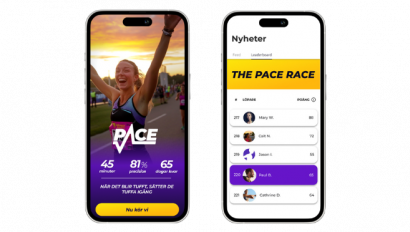How To Track Where Your Registrations Come From

Understanding where your registrations come from is key to maximizing the effectiveness of your marketing efforts. Knowing which channels bring in the most traffic and conversions can help you fine-tune your strategy and make the most of your marketing budget. In this blog post, we’ll walk you through various methods to track registrations, including using tracking pixels, UTM tags, and more.
Why Tracking Registrations is Crucial
Tracking the source of your registrations isn’t just about knowing where your traffic is coming from; it’s about understanding your audience’s journey and optimizing your campaigns accordingly. By identifying the most effective channels, you can allocate your resources more efficiently and ensure you’re reaching the right audience. Plus, it gives you a clearer picture of your return on investment (ROI) and helps you make data-driven decisions.
Overview of Tracking Methods
There are several ways to track where your registrations come from. Some of the most common methods include tracking pixels, UTM tags, and referral links. Each method has its own benefits and can provide valuable insights into your marketing efforts.
Using Tracking Pixels
Tracking pixels are small, invisible images embedded in your web pages or emails that track user behavior. They collect data on how users interact with your content, such as page views and conversions. You usually have to create separate pixels for each platform, like Google and Meta for example. Use each platform’s user guides and support center to help you. Sometimes it is easy, and sometimes you may need help from your web developer to set it up – it all depends on which website platform you are using.
Steps to Implement Tracking Pixels:
- Choose a Platform: Decide which platform you want to use for tracking, like Facebook Pixel or Google Analytics. You may want to set up several.
- Set Up the Pixel: Follow the platform’s instructions to create and install the pixel on your website. This usually involves adding a snippet of code to your site’s header.
- Verify the Pixel: Ensure the pixel is working correctly by using tools like Facebook Pixel Helper or Google Tag Assistant.
- Analyze the Data: Use the data collected by the pixel to understand user behavior, track conversions, and optimize your campaigns.
UTM Tags for Campaign Tracking
UTM tags are small snippets of text added to the end of a URL. They help you track the performance of individual campaigns by providing detailed information about the traffic coming to your site. This can be used for organic efforts such as social media and email marketing.
Creating UTM Tags:
- Understand the Components: UTM tags consist of five parameters: source, medium, campaign, term, and content.
- Use a UTM Builder: Tools like Google’s Campaign URL Builder can help you create UTM-tagged URLs easily.
- Best Practices: Be consistent with your naming conventions to ensure data is easy to analyze later.
- Integration: Add UTM tags to your URLs in social media posts, email campaigns, ads, and more.
Once you’ve created your UTM-tagged links, you can track them in Google Analytics or other analytics tools to see how each campaign performs.
Additional Tracking Methods
Referral Links: Referral links are unique URLs given to affiliates or partners to track the traffic they send to your site. By using referral links, you can see which partners are driving the most registrations and adjust your partnership strategies accordingly. A type of referral link is RaceID’s Campaign Links.
Coupon Codes and Promo Links: Using specific coupon codes or promotional links for different marketing channels is another effective way to track where your registrations are coming from. This method is particularly useful for tracking offline campaigns, such as flyers or radio ads. One example is using QR Codes.
Analyzing and Interpreting Data
Once you have data from tracking pixels, UTM tags, and other methods, it’s time to analyze it. Look for trends and patterns in your data. Are certain channels consistently driving more traffic and conversions? Are some campaigns performing better than others? Use these insights to optimize your future marketing efforts.
Key Metrics to Monitor:
- Conversions (registrations)
- Cost per acquisition (CPA, how much you have to pay for each registration, in paid platforms)
- Return on investment (ROI)
- Traffic volume and quality – these are what we call “vanity metrics”. Traffic can be interesting to look at, but the real numbers you should care about and optimize for are the actual registrations you get from each channel, and your return on investment.
Remember, tracking is not a one-time setup. Regularly review and update your tracking methods to adapt to changes in your marketing strategies and ensure you’re collecting accurate data.
Best Practices and Tips for Registration Tracking
- Consistency is Key: Use consistent naming conventions for UTM tags and other tracking methods to make analysis easier.
- Regular Reviews: Periodically check your tracking setups to ensure everything is working correctly and data is being collected as expected.
- Combine Data Sources: Use data from multiple tracking methods to get a comprehensive view of your marketing performance.
- Compliance: Always comply with privacy laws and regulations, such as GDPR and CCPA, when collecting and storing user data.
Additional Resources
- Google Analytics Setup Guide
- Facebook Pixel Implementation
- Google’s Campaign URL Builder for UTM Tags
- Google Tag Assistant
By using these tools and techniques, you can gain valuable insights into your marketing efforts and make data-driven decisions to improve your campaigns and increase teh number of registrations for your race. Happy tracking!


